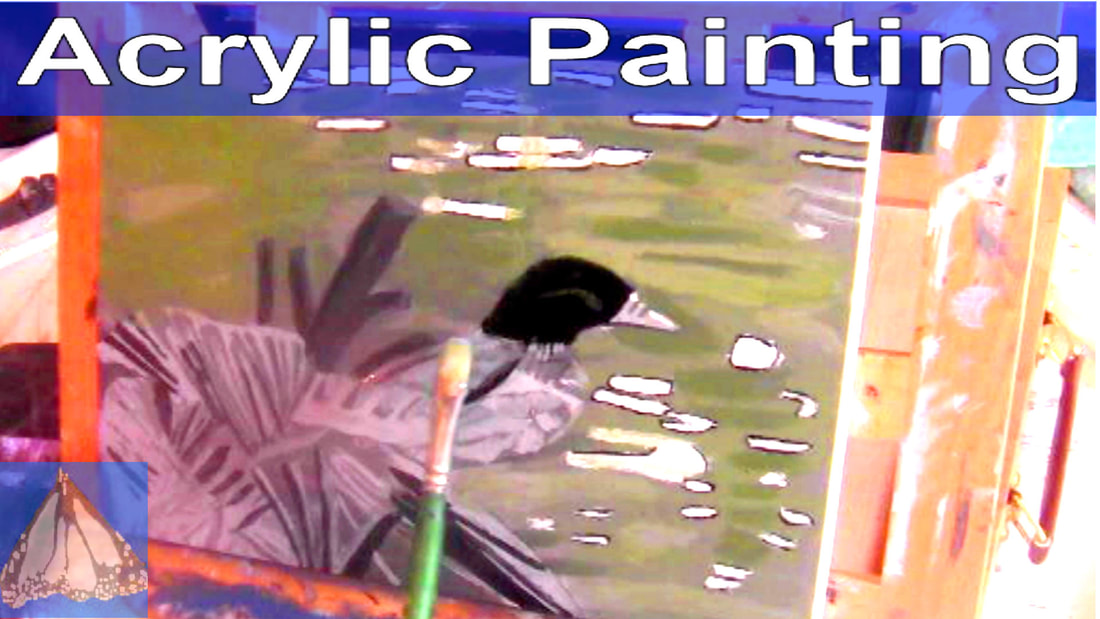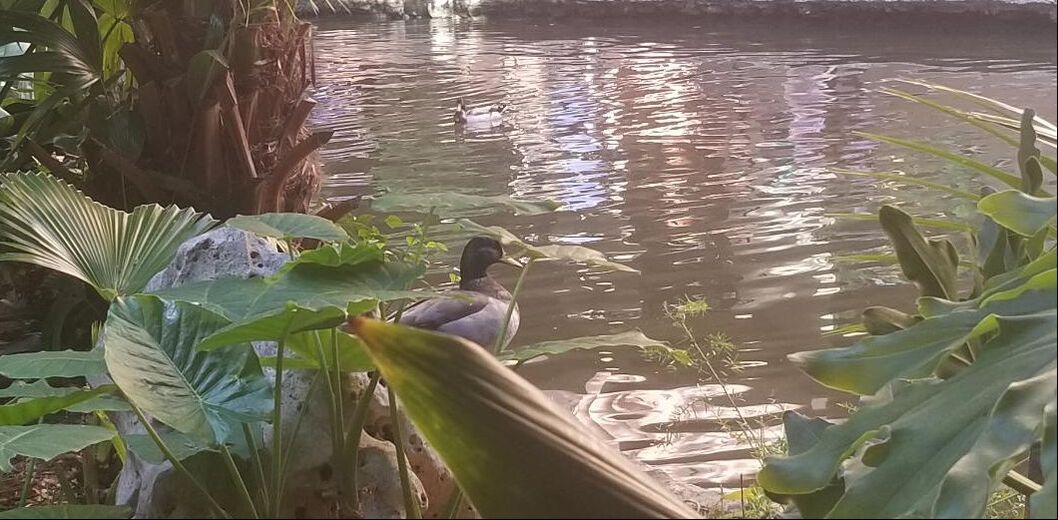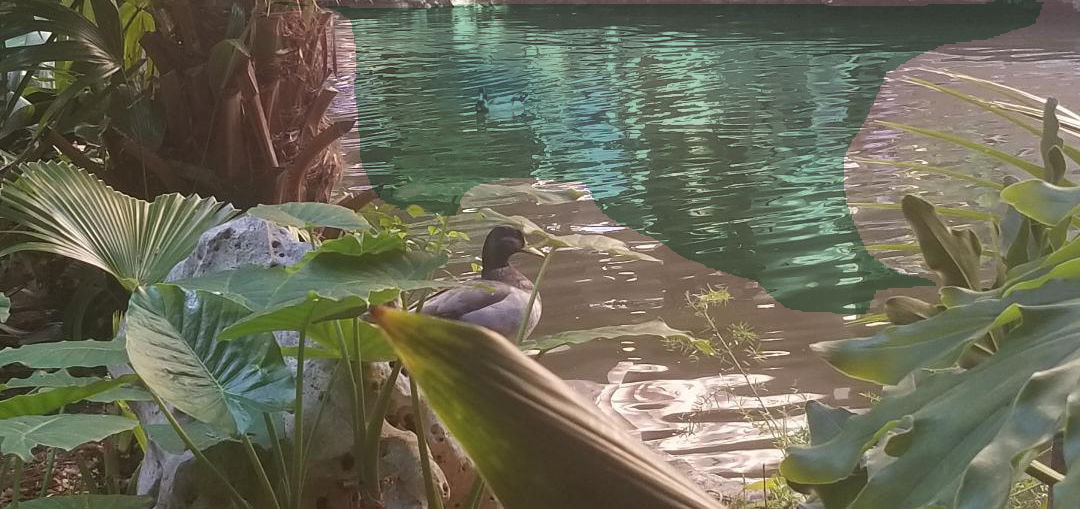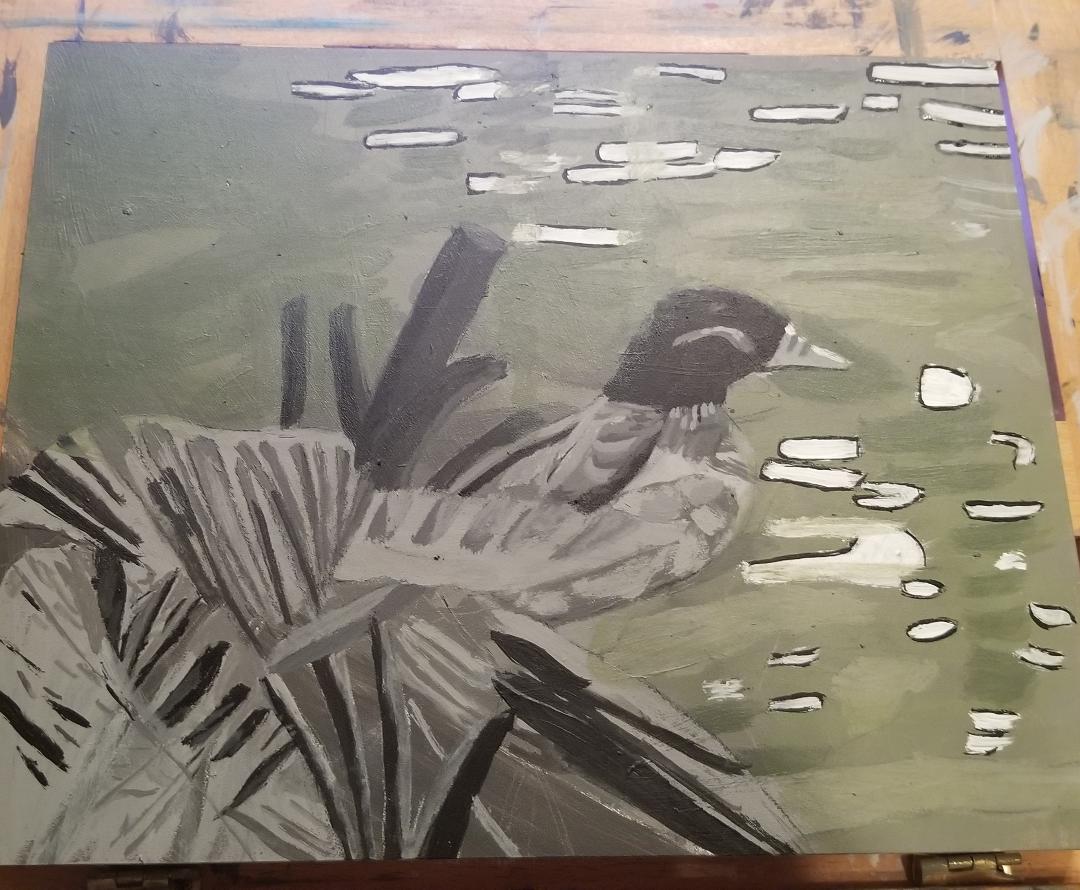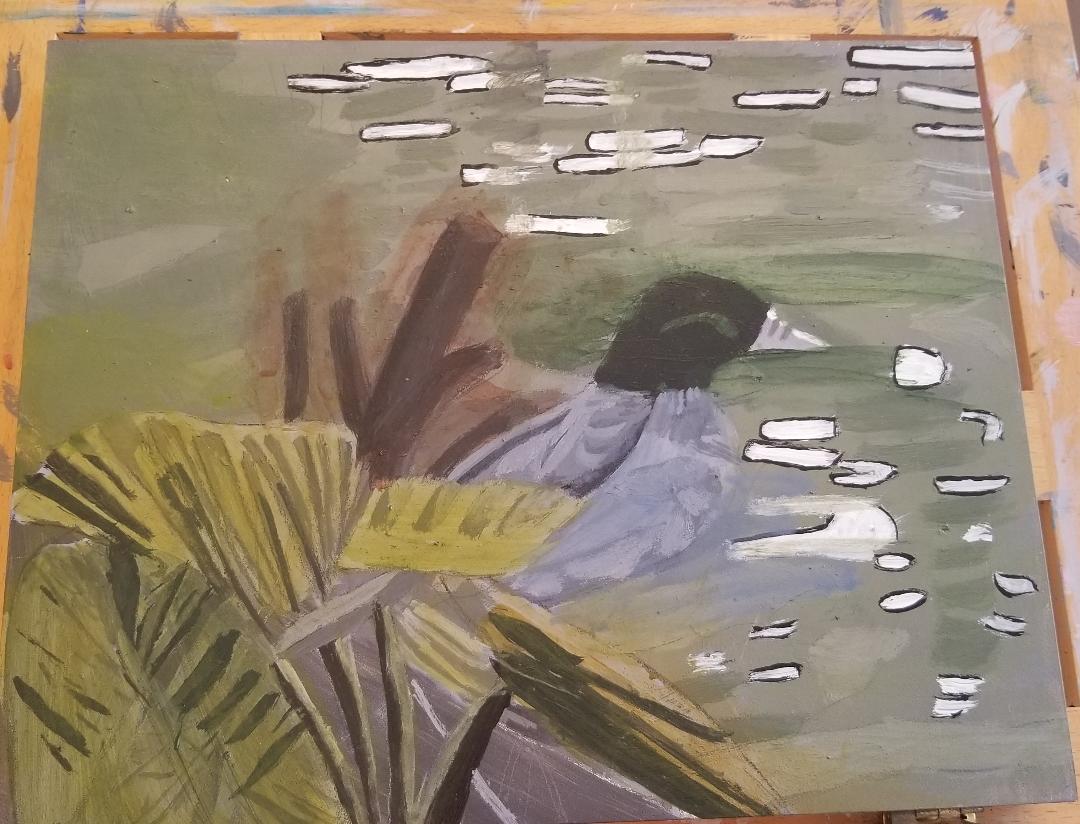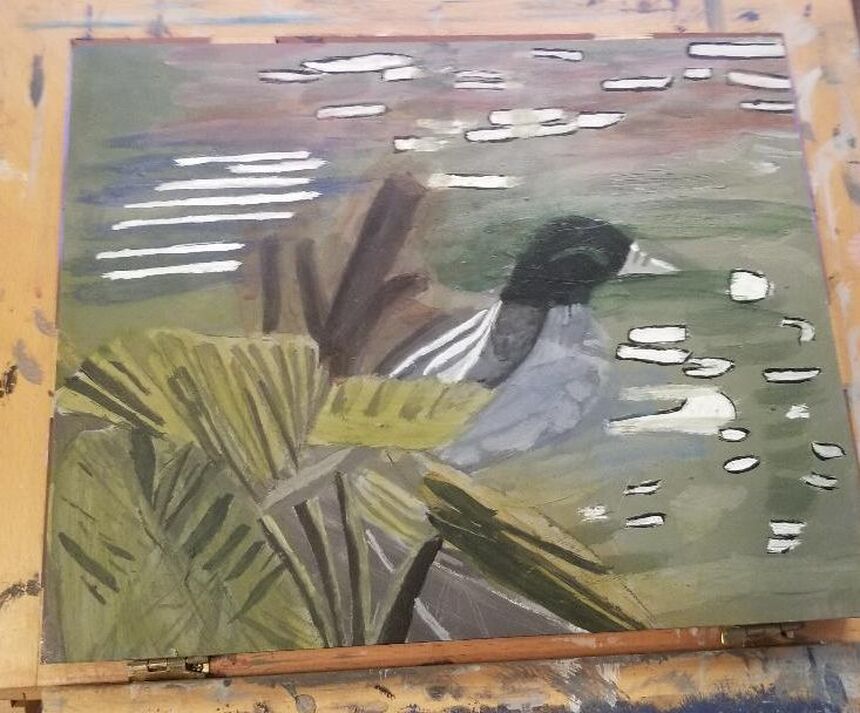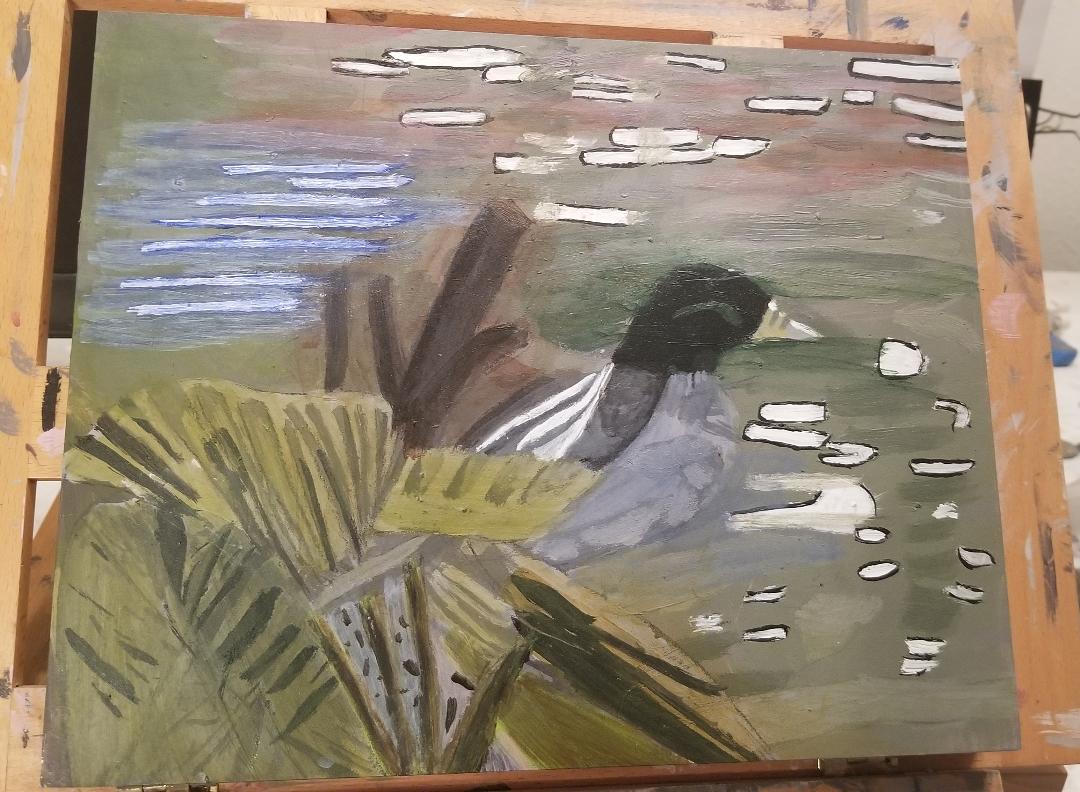|
At the time of beginning this post, I haven't put a single stroke of color on my painting that I'm doing from this photo. But I knew very early on that I didn't want to make the river gray as depicted in the photo. I felt like I wanted to make it a blue green. I thought I should do some experimenting in Corel Paintshop, though, to see if my idea would work. I think it will. Day One I started by blocking the river in a grayish blue green liked I planned on, darkening it for the shadows. Now, while I was doing the underpainting, I noticed some white spots, but I didn't paint them at the time. Now was the time to paint those so that they wouldn't get covered by the blue-green I was using for the water. The most important part was keeping my brush moving in one continuous line in order to make the spots as smooth as possible. Smoothness here was more important than getting the exact right shape or width. These things had to be close, but they didn't have to be exact is what I had to tell myself. I need the smoothness because I'm depicting still, shiny water. Ragged edges would give the feel of roughness, which would be helpful if I was painting an ocean with waves crashing, but not for this. Even after I'd painted the white spots, made sure they were nice and opaque, and my edges were smooth, the water still didn't have that glossiness I wanted it to have. I decided to do something I'd thought about earlier, not knowing how it would come out, and that was to paint thin outlines of black around the white areas. Using the tip of my liner brush and some mars black, I did exactly that. My objective was to keep the lines as thin as possible. After I did that, I felt like the water was starting to take on more of the gloss I wanted it to have. Day Two Today was time to paint the duck and leaves. When I looked at the duck, I have to admit, I wasn't entirely sure what to paint it. Now, I've had a habit of, when I'm not completely sure about something, feeling almost paralyzed with indecision. But now, I've decided to start a habit of plunging into something rather than pondering over it forever. I thought I saw a brownish green in his neck. Again, I wasn't a hundred percent sure, but I went for it. If I hated it, I could paint over it or wipe it off. But the only way, really, to know if you're going to like how something is going to look in your painting is to see it and the only way to see it, is to take the plunge and paint it. Well, it didn't look horrible.;) I saw a blue gray in the duck's body and can you guess what I did? That's right, mixed some up and glazed it over that part. I try to remember what Lisa Clough says, which is that you can paint something pretty much whatever color you want.(Assuming it's your own painting. You can't take as many liberties with commissions.) It's your values that matter. I mixed a little bit of brown into some yellow and then a tiny bit of red into that forth the big leaf on the right hand side. I mixed some blue and yellow, so I made a green, into this color for the rest of the leaves. I felt like the leaf under the palm leaf was a bit more bluish. No big deal. I just glazed some blue right over it. Everytime I finished anything that was touching the water, I brought that color into the water, often going over it a paint free wet brush to make sure it was translucent enough. This helped add even more to the shine and iridescence of the water. Day Three I sat down to today's painting session with two objectives, to add some pink into the water, and darken the duck's wing. I originally didn't think I would add any other colors into the water, other than those of the duck and the leaves, but I'm glad I did. Anyway, as you can see, I ended up doing quite a bit more than what I'd originally intended. Adding the pink,(and the orange, and the blue), was important part of making it look as shiny as I wanted it to. Anything that's shiny is going to reflect whatever is around it. So, besides putting some pink in the water, I said another thing I wanted to do was darken the duck's wing. I'm still sticking with the blue-grey color scheme, but I thought there should be more of a contrast between the duck's wing and his belly. After doing this, though, I felt like the highlights I'd painting weren't standing out enough, so I went over them with a liner brush and some titanium white. I still didn't like the pattern I'd made, so, while not being one hundred percent sure if I had the right idea, I widened the end of the third swipe that was closer to the leaf, closing the gap between it and the one next to it. After I did that, I was much happier with the shape of the wing. I'm not sure about the patch of blue with white streaks in the water on the left-hand side. After painting a few layers of the blue, it didn't look quite right and I thought adding the white would improve matters. Now, though, I think I'm going to find myself glazing over those white spots with more blue. Day Four I started by painting light blue right over the dark blue streaks I had painted on the river in the far left. After the first couple of strokes of that, I was already thinking that section was looking much better. I went directly over the white spots with a liner brush and some watered down ultramarine blue. The little bit of white that still shows will act as my highlights. I directed my attention to the leaves and rock. I painted the rock a grayish blue and brownish pink. Since it appears to have a pumice like texture, I painted some holes in it using burnt umber mixed with ivory black and a liner brush. I realized there was a whole side to one leaf I hadn't painted it. I painted it with a mixture of transparent mixing white, burnt umber, and permanent green light. I later glazed yellow and brown over that side of the lead to make it blendi n better with the others. I felt that the reeds needed painting. I tried painting them a yellow green, but I quickly saw that that wasn't working. I wipe most of the yellow-green paint off and painted them just plain brown instead. I think it looks much better, although I may glaze over them with green and see how that goes.
0 Comments
Your comment will be posted after it is approved.
Leave a Reply. |
Sara MillettPainter of portraits and wildlife Archives
November 2023
Categories
All
|
